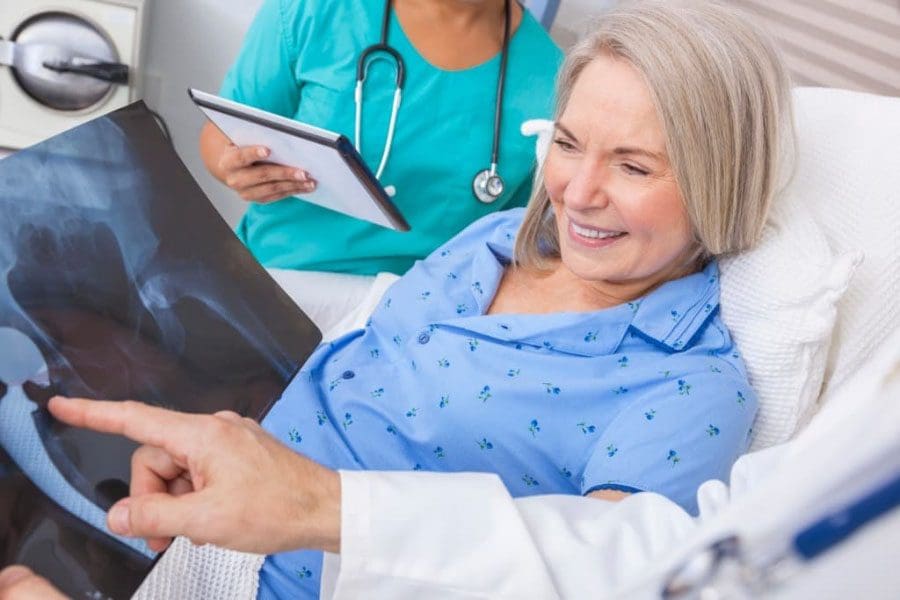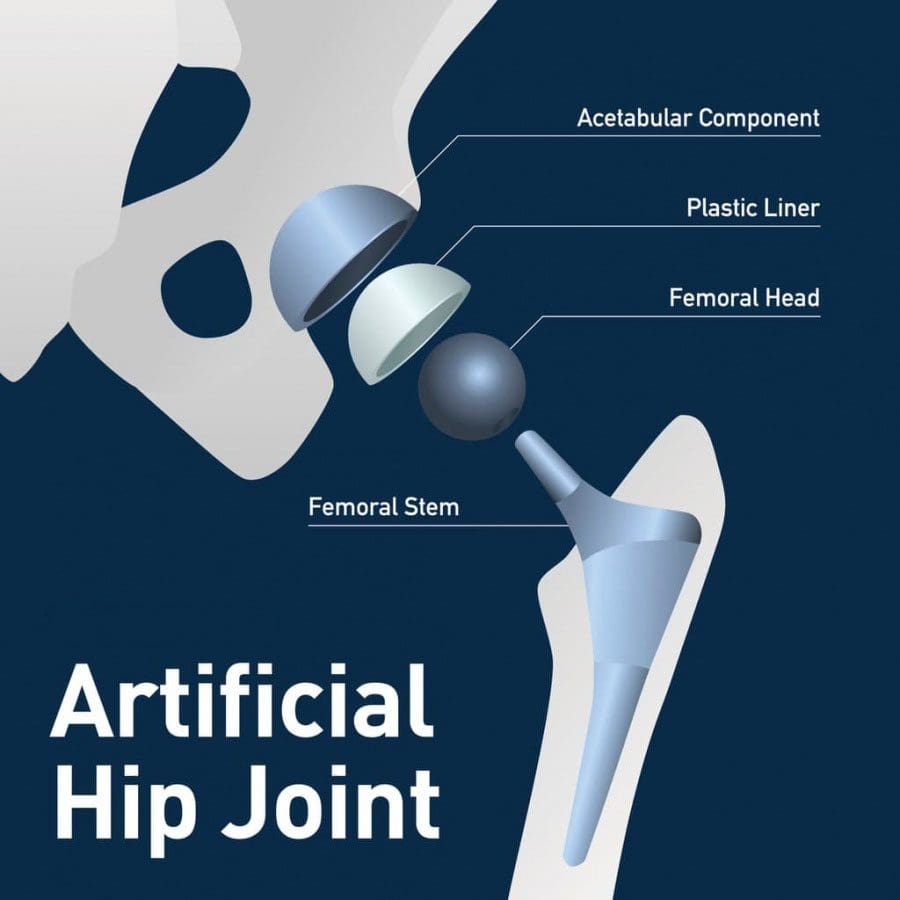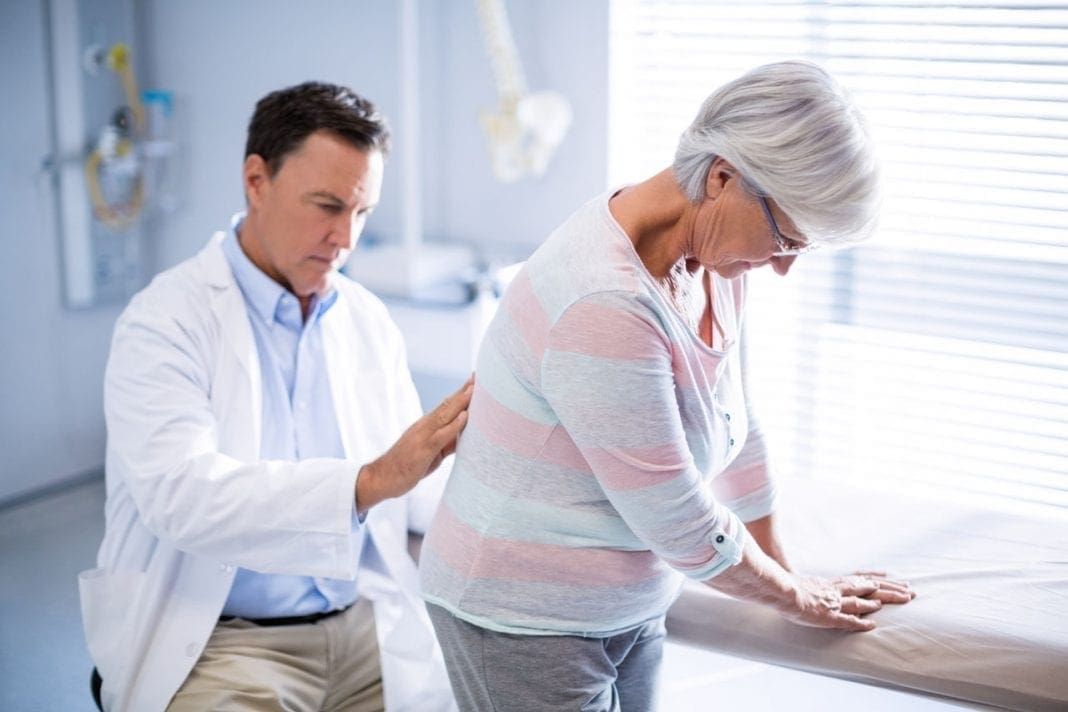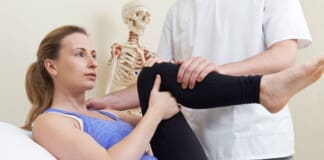
Table of Contents
Hip Issues
The hip/s move with the lower back during activities like walking, sitting, bending, etc. Tight muscles, normal wear-and-tear, and osteoarthritis can reduce hip movement, forcing the lower back to make awkward and poor posture causing adjustments. Individuals usually relieve the painful position by increasing the curve of their lower back. If an individual has severe arthritis of the hip, they put a lot of stress and pressure on the low back that often results in low back pain. Advanced hip osteoarthritis is the breakdown of joint cartilage and the most common type of arthritis. Individuals with this type experience low back pain 50% of the time, and even higher depending on the individual’s condition. 80% to 90% of individuals with hip or knee arthritis, unfortunately, develop low back arthritis. There is not yet a clear reason as to why this occurs. It is theorized that some osteoarthritis risk factors like obesity and high-impact/force activities can be modified with lifestyle adjustments. Other risk factors that include injury, trauma, age, and congenital conditions like hip dysplasia, cannot be avoided. Hip osteoarthritis isn’t the only hip issue that can also cause lower back pain. Other hip issues.Sacroiliac joint dysfunction
The sacroiliac joint connects the sacrum to the pelvis. It is a shock absorber between the upper body, the pelvis and can stiffen with time. Sacroiliac joint pain affects around 15% to 25% of individuals with low back pain. It worsens when climbing stairs, getting up from a seated position or running. Symptoms include:- Low back pain
- Pain in buttock/s
- Groin pain
- Stiffness
- Instability
Piriformis syndrome
About 200,000 individuals each year are affected with piriformis syndrome and is often misdiagnosed as symptoms resemble sciatica. What happens is the piriformis muscle, which connects the sacrum to the top of the femur, tightens/irritates the sciatic nerve. Symptoms are often mistaken for sciatica with pain in the buttocks, numbness, and tingling that travels down the back of the leg and into the feet.
Diagnosis
A doctor or chiropractor will use a combination of diagnostic tools. This typically includes a physical exam, X-rays with other specific tests to help identify the source of pain. What typically happens is a patient will undergo a hip and lumbar spine X-ray, but the thoracic spine, pelvis, and hip areas are missed. Getting the middle segment is critical to see how the spine and hips are working together. It is critical to understand the hip-spine connection. All spine patients should have X-rays of the hips to make sure any problems don’t go undetected. The overlap of symptoms with these two areas could be overlooked. If necessary a diagnostic injection into the hip joint can help precisely locate the pain source. This can be done at the clinic or doctor’s office using ultrasound or X-ray to guide the needle. If no pain relief results from the injection, hip replacement is still not considered because the pain could be coming from the spine. A critical part of the diagnosis is not just imaging. One of the most important parts is getting a thorough history of symptoms. X-rays and MRI show what the problem could be, however, the symptoms could coming from another area.Treatment Options
Before total hip replacement is considered there are nonsurgical approaches to be considered. All diagnoses should start with conservative treatment. Physical therapy, chiropractic, gait training, and core strengthening can optimize the spine to better manage hip issues and arthritis. Conservative therapies could also include:- Weight loss
- Activity modification like walking instead of running
- Anti-inflammatory medication
- Cortisone injections

Conclusion
Get a second opinion. Individuals are encouraged to educate themselves as much as possible on the condition. The hip and spine is a complex relationship. The most important information for patients is that they understand along with their doctor where the pain is coming from, the hip, spine, or both.Reduce Plantar Fasciitis Foot Pain
Dr. Alex Jimenez’s Blog Post Disclaimer
The scope of our information is limited to chiropractic, musculoskeletal, physical medicines, wellness, and sensitive health issues and/or functional medicine articles, topics, and discussions. We use functional health & wellness protocols to treat and support care for injuries or disorders of the musculoskeletal system. Our posts, topics, subjects, and insights cover clinical matters, issues, and topics that relate and support directly or indirectly our clinical scope of practice.* Our office has made a reasonable attempt to provide supportive citations and has identified the relevant research study or studies supporting our posts. We also make copies of supporting research studies available to the board and or the public upon request. We understand that we cover matters that require an additional explanation as to how it may assist in a particular care plan or treatment protocol; therefore, to further discuss the subject matter above, please feel free to ask Dr. Alex Jimenez or contact us at 915-850-0900. The provider(s) Licensed in Texas& New Mexico*Professional Scope of Practice *
The information herein on "Hip Issues Could Be Source of Lower Back Pain" is not intended to replace a one-on-one relationship with a qualified health care professional or licensed physician and is not medical advice. We encourage you to make healthcare decisions based on your research and partnership with a qualified healthcare professional.
Blog Information & Scope Discussions
Welcome to El Paso's Premier Wellness and Injury Care Clinic & Wellness Blog, where Dr. Alex Jimenez, DC, FNP-C, a Multi-State board-certified Family Practice Nurse Practitioner (FNP-BC) and Chiropractor (DC), presents insights on how our multidisciplinary team is dedicated to holistic healing and personalized care. Our practice aligns with evidence-based treatment protocols inspired by integrative medicine principles, similar to those found on this site and our family practice-based chiromed.com site, focusing on restoring health naturally for patients of all ages.
Our areas of multidisciplinary practice include Wellness & Nutrition, Chronic Pain, Personal Injury, Auto Accident Care, Work Injuries, Back Injury, Low Back Pain, Neck Pain, Migraine Headaches, Sports Injuries, Severe Sciatica, Scoliosis, Complex Herniated Discs, Fibromyalgia, Chronic Pain, Complex Injuries, Stress Management, Functional Medicine Treatments, and in-scope care protocols.
Our information scope is multidisciplinary, focusing on musculoskeletal and physical medicine, wellness, contributing etiological viscerosomatic disturbances within clinical presentations, associated somato-visceral reflex clinical dynamics, subluxation complexes, sensitive health issues, and functional medicine articles, topics, and discussions.
We provide and present clinical collaboration with specialists from various disciplines. Each specialist is governed by their professional scope of practice and their jurisdiction of licensure. We use functional health & wellness protocols to treat and support care for musculoskeletal injuries or disorders.
Our videos, posts, topics, and insights address clinical matters and issues that are directly or indirectly related to our clinical scope of practice.
Our office has made a reasonable effort to provide supportive citations and has identified relevant research studies that support our posts. We provide copies of supporting research studies upon request to regulatory boards and the public.
We understand that we cover matters that require an additional explanation of how they may assist in a particular care plan or treatment protocol; therefore, to discuss the subject matter above further, please feel free to ask Dr. Alex Jimenez, DC, APRN, FNP-BC, or contact us at 915-850-0900.
We are here to help you and your family.
Blessings
Dr. Alex Jimenez DC, MSACP, APRN, FNP-BC*, CCST, IFMCP, CFMP, ATN
email: coach@elpasofunctionalmedicine.com
Multidisciplinary Licensing & Board Certifications:
Licensed as a Doctor of Chiropractic (DC) in Texas & New Mexico*
Texas DC License #: TX5807, Verified: TX5807
New Mexico DC License #: NM-DC2182, Verified: NM-DC2182
Licensed as a Multi-State Advanced Practice Registered Nurse (APRN*) in Texas & Multistate
Multistate Compact RN License by Endorsement (42 States)
Texas APRN License #: 1191402, Verified: 1191402 *
Florida APRN License #: 11043890, Verified: APRN11043890 *
* Prescriptive Authority Authorized
ANCC FNP-BC: Board Certified Nurse Practitioner*
Compact Status: Multi-State License: Authorized to Practice in 40 States*
Graduate with Honors: ICHS: MSN-FNP (Family Nurse Practitioner Program)
Degree Granted. Master's in Family Practice MSN Diploma (Cum Laude)
Dr. Alex Jimenez, DC, APRN, FNP-BC*, CFMP, IFMCP, ATN, CCST
My Digital Business Card
RN: Registered Nurse
APRNP: Advanced Practice Registered Nurse
FNP: Family Practice Specialization
DC: Doctor of Chiropractic
CFMP: Certified Functional Medicine Provider
IFMCP: Institute of Functional Medicine
CCST: Certified Chiropractic Spinal Trauma
ATN: Advanced Translational Neutrogenomics














